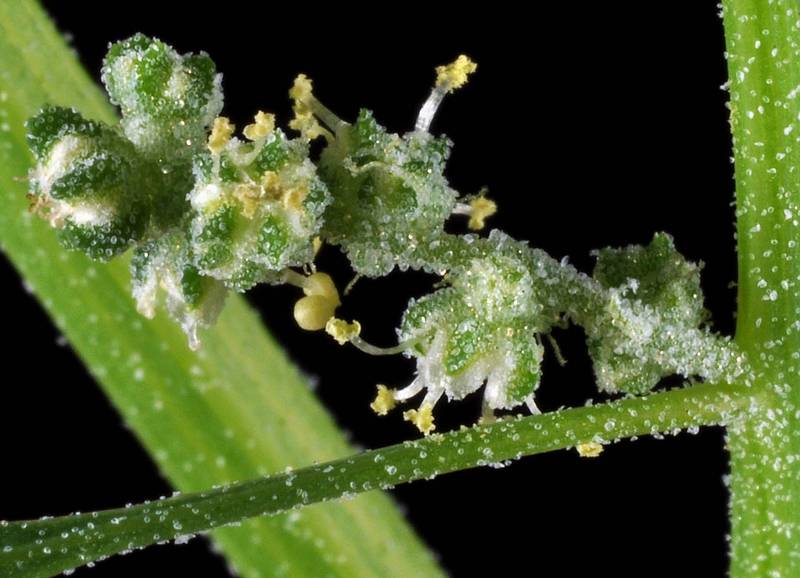Chenopodium album
Chenopodium fremontii
lambsquarters, pigweed
Fremont's goosefoot
Leaves alternate, usually firm and somewhat succulent, the blade ovate to rhombic with a wedge-shaped base, 3-10 cm. long, mostly shallowly to deeply wavy-toothed, with a slender, short petiole.
Flowers perfect, glomerate in large, terminal panicles;
perianth 5-cleft to below the middle, with a mealy coating, becoming strongly keeled and completely covering the fruit;
stamens 5, opposite the perianth lobes;
styles 2, short.
Utricle.
Chenopodium album
Chenopodium fremontii
Occurring on both sides of the Cascades crest in Washington; Alaska to California, east across North America to the Atlantic Coast.
Occurring east of the Cascades crest in Washington; British Columbia to California, east to the Great Plains.
- Local floras:
BC,
CA,
OR,
WA
- Local Web sites:
CalFlora,
CalPhotos,
Flora NW,
PNW Herbaria
WildflowerSearch
iNaturalist (observations)
USDA Plants Database
- LBJ Wildflower Center
- SEINet
- Plants of the World Online
- Encyclopedia of Life
- Wikipedia
- Google Image Search
- Local floras:
BC,
CA,
OR,
WA
- Local Web sites:
CalFlora,
CalPhotos,
Flora NW,
PNW Herbaria
WildflowerSearch
iNaturalist (observations)
USDA Plants Database
- LBJ Wildflower Center
- SEINet
- Plants of the World Online
- Encyclopedia of Life
- Wikipedia
- Google Image Search



